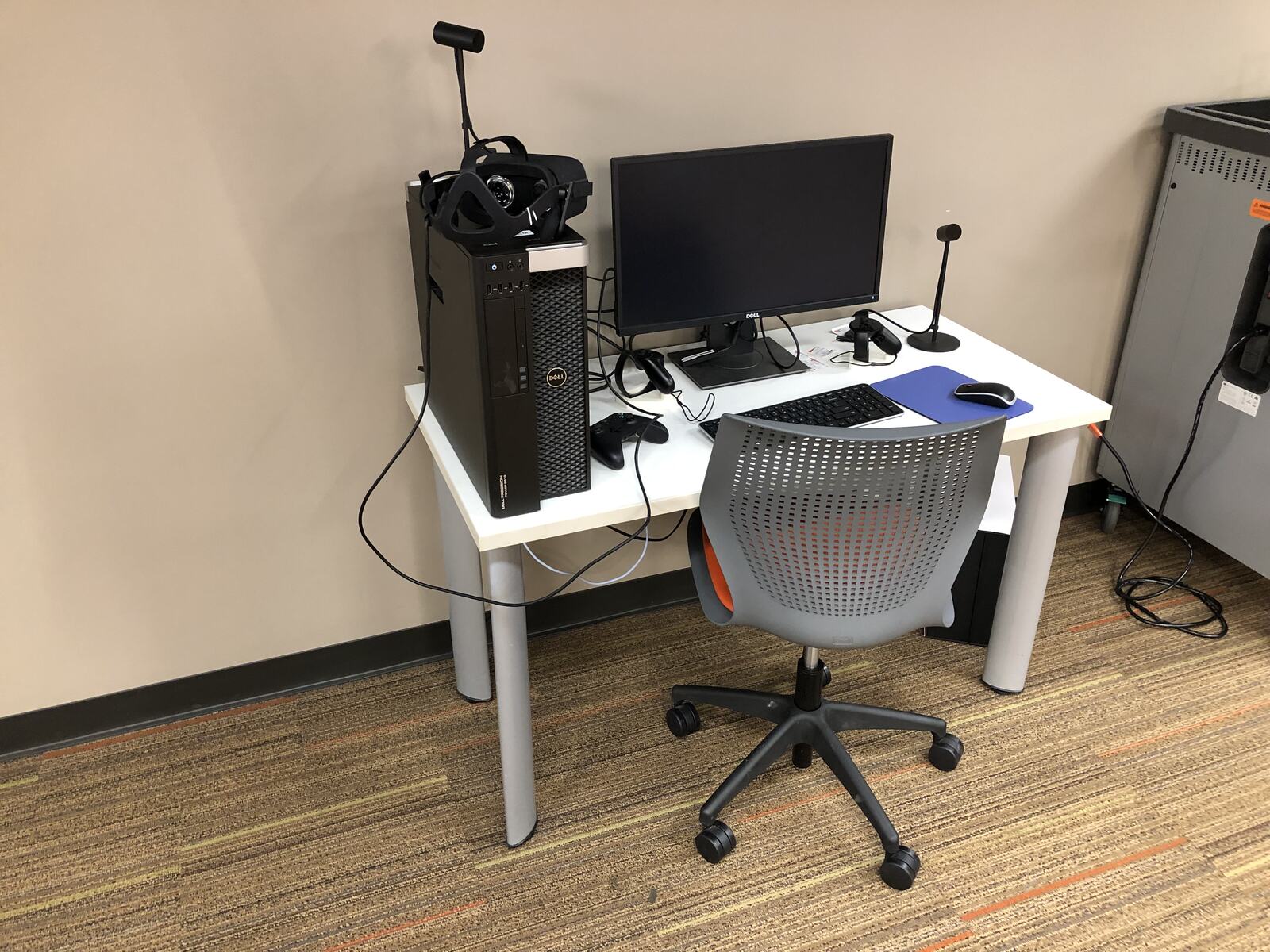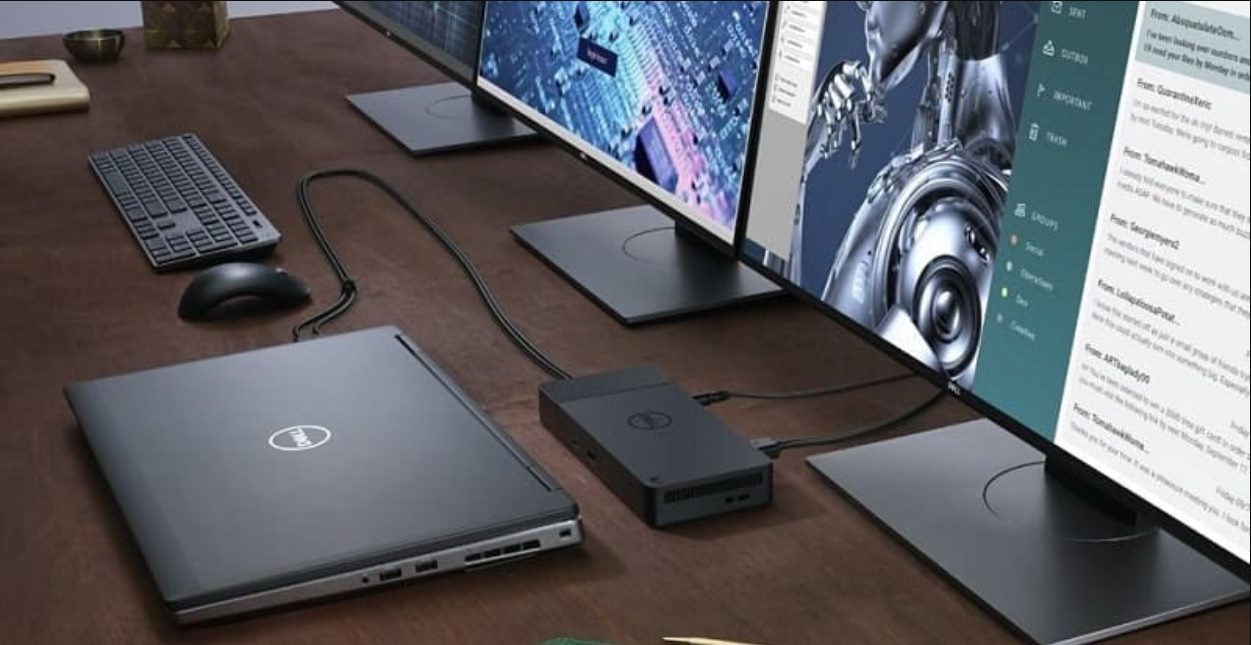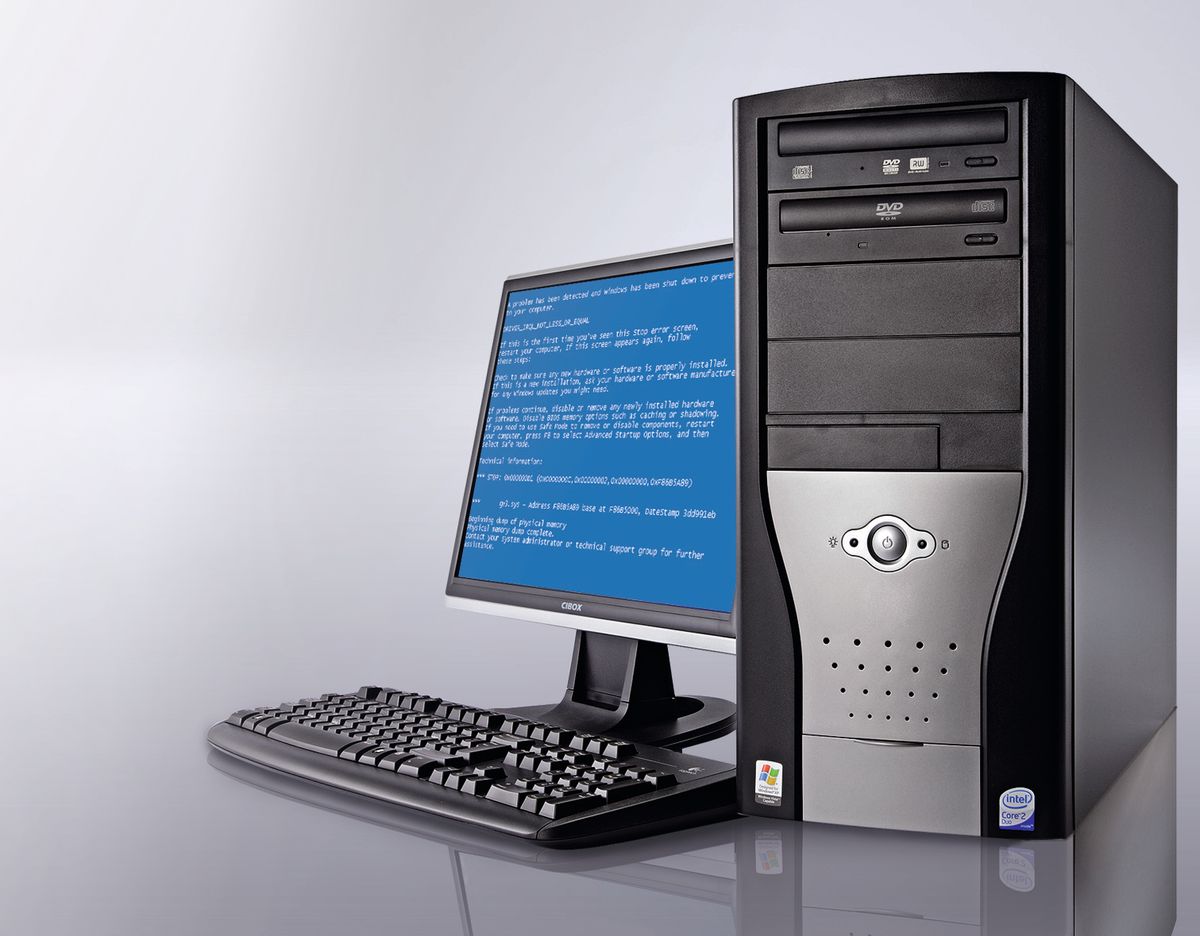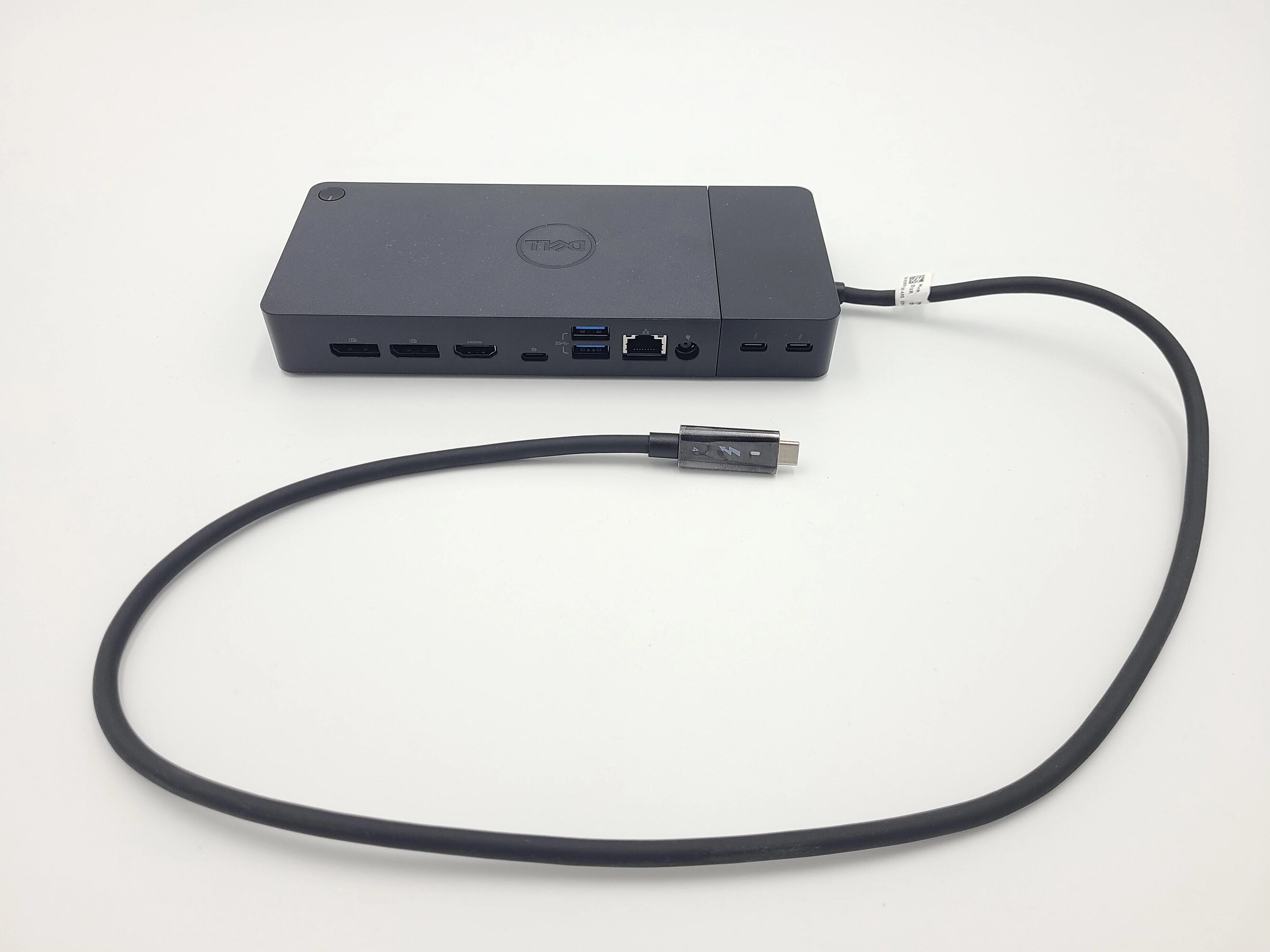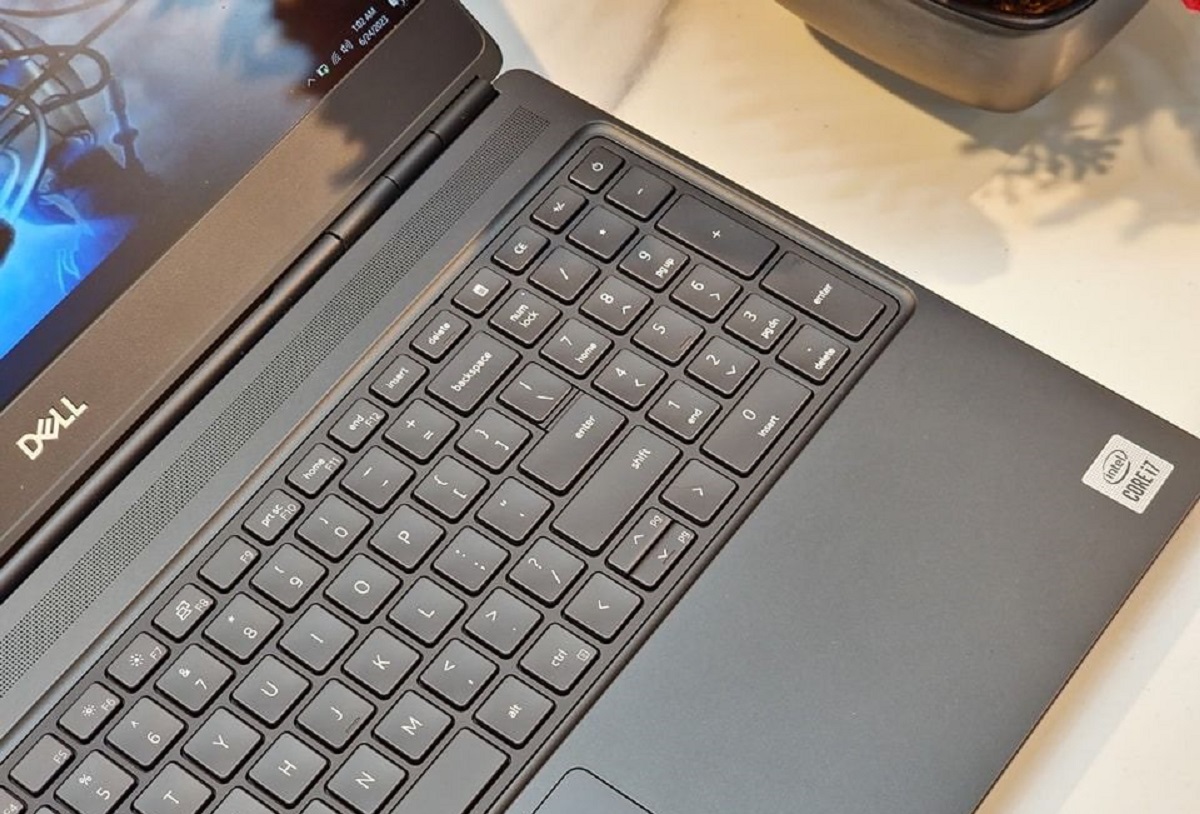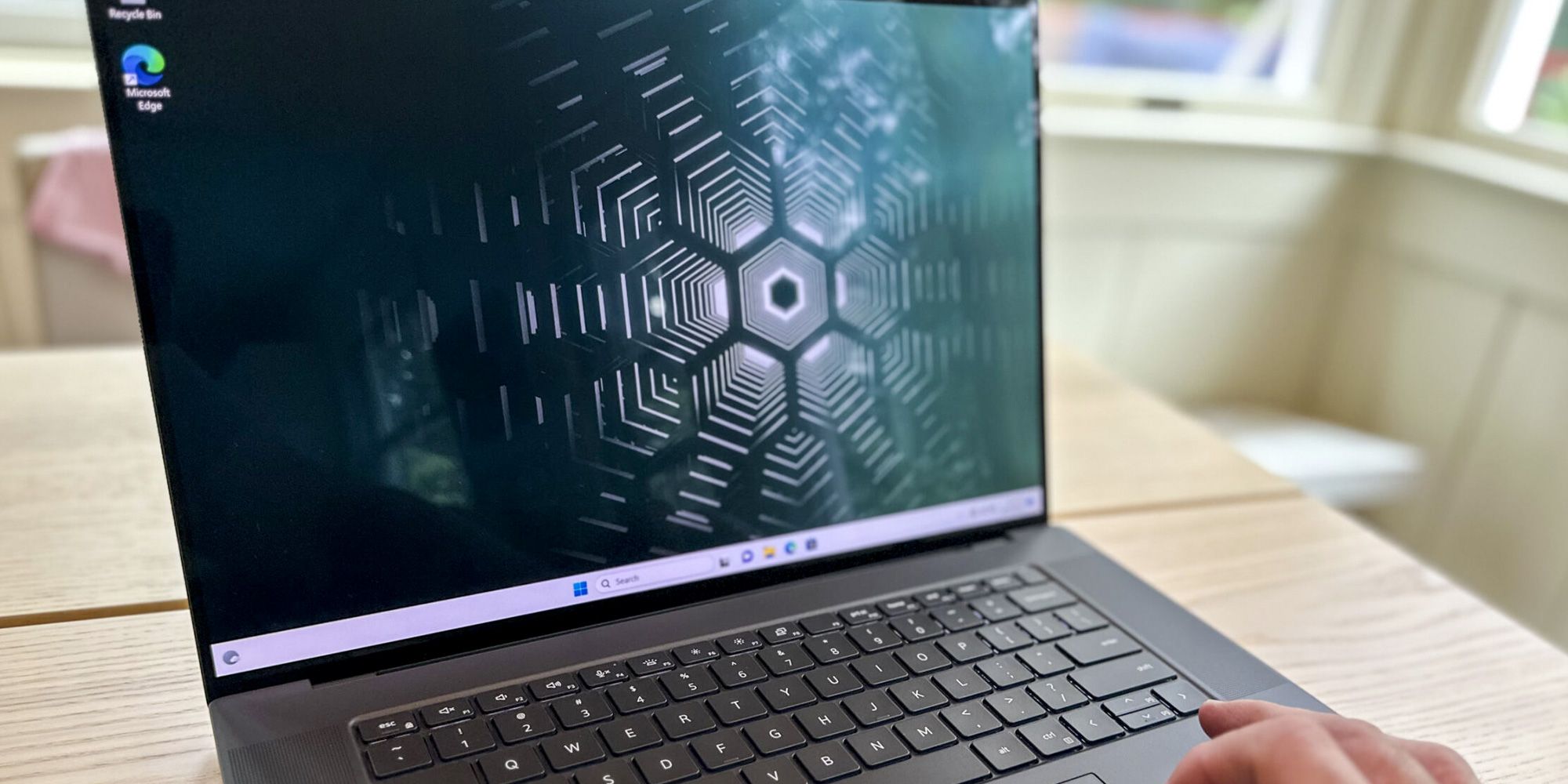Introduction
A Dell Precision Workstation 210 is a high-performance computer designed for professional users who require robust processing power and reliable performance. Whether you want to upgrade certain components or troubleshoot an issue, knowing how to disassemble the workstation is essential. This guide will provide you with step-by-step instructions on how to safely and effectively disassemble a Dell Precision Workstation 210.
Before you start, it’s important to note that disassembling your workstation may void any existing warranties or support agreements. If your workstation is still under warranty, consider contacting Dell’s customer support for assistance before attempting any disassembly.
This guide assumes that you have a basic understanding of computer hardware, as well as the necessary tools and materials to perform the disassembly. Taking the time to properly prepare and organize your workspace will help ensure a smoother disassembly process.
Remember, disassembling your workstation requires careful handling and attention to detail. Make sure to work in a well-lit area, use an anti-static wristband to prevent electrostatic discharge, and take your time to avoid any accidental damage to sensitive components.
Now, let’s dive into the step-by-step process of disassembling a Dell Precision Workstation 210, and get ready to explore the inner workings of your powerful machine.
Tools and Materials Needed
Before you begin disassembling your Dell Precision Workstation 210, gather the following tools and materials to ensure a smooth and efficient process:
- Phillips screwdriver: This will be used to remove screws that secure various components.
- Torx screwdriver set: Some screws in the workstation may require a Torx screwdriver, so having a set of various sizes on hand will be helpful.
- Anti-static wristband: To prevent electrostatic discharge, wear an anti-static wristband to ground yourself while handling sensitive components.
- Plastic or nylon spudger: A plastic or nylon spudger is useful for gently prying open connectors and components without damaging them.
- Cable ties or Velcro straps: These can be used to secure cables and prevent them from getting tangled or obstructing the disassembly process.
- Cleaning materials: It’s always a good idea to have some lint-free cloths, compressed air cans, and thermal paste cleaner on hand for cleaning and maintenance purposes.
- Workspace organization tools: Use small containers or ziplock bags to keep track of screws and other small components during disassembly.
- Optional: Thermal paste: If you plan to remove and reinstall the processor heat sink, it’s recommended to have some thermal paste available for reapplication.
Having these tools and materials readily available will make the disassembly process more efficient and help ensure the safety of your workstation’s components. Now that you are properly equipped let’s move on to the step-by-step disassembly process.
Step 1: Shutting Down and Preparing the Workstation
Before you begin the disassembly process, it’s crucial to shut down your Dell Precision Workstation 210 properly. Follow these steps to ensure a safe and orderly shutdown:
- Save your work: Save all your files and close any open applications to prevent data loss.
- Disconnect from power: Safely shut down your operating system and unplug the power cord from the workstation. This will prevent any potential electric shocks during the disassembly process.
- Drain residual power: Press and hold the power button for a few seconds to discharge any remaining power from the system. This step is important to prevent any residual power from damaging the components.
- Prepare your workspace: Clear a clean and well-lit flat surface to work on. Avoid carpeted areas that can generate static electricity. Place a soft cloth or an anti-static mat on your work surface to protect the workstation from scratches and electrostatic damage.
- Put on an anti-static wristband: Attach the anti-static wristband to your wrist and connect the other end to a grounded metal surface. This helps to prevent static discharge that could damage sensitive internal components.
- Take note of cable connections: Before proceeding with the disassembly, take a moment to observe and take note of the various cable connections. This will make reassembly easier and prevent any confusion later on.
By following these steps, you have successfully shut down your workstation and prepared your workspace for the disassembly process. Now, let’s move on to the next step of removing the side panel.
Step 2: Removing the Side Panel
Now that you have shut down and prepared your Dell Precision Workstation 210, it’s time to remove the side panel. Follow these steps:
- Locate the side panel: Identify the side panel of your workstation. It is typically the left side when facing the front of the workstation.
- Remove the screws: Use a Phillips screwdriver to remove the screws that secure the side panel to the chassis. In most cases, there are two screws located at the back of the workstation.
- Slide off the side panel: Once the screws are removed, gently slide the side panel towards the back of the workstation. The panel should easily come off, revealing the internal components.
- Set aside the side panel: Place the removed side panel in a safe location where it won’t be damaged or misplaced. If possible, keep it in an upright position to prevent any scratches or dents.
With the side panel successfully removed, you now have access to the internal components of your Dell Precision Workstation 210. Take a moment to familiarize yourself with the layout and arrangement of the components before proceeding to the next step.
Properly removing the side panel grants you entry into the internal workings of your workstation, allowing for further disassembly and maintenance. In the next step, we will discuss the process of disconnecting and removing the cables.
Step 3: Disconnecting and Removing the Cables
With the side panel of your Dell Precision Workstation 210 successfully removed, it’s time to disconnect and remove the cables. Follow these steps:
- Identify the cables: Observe the various cables connected to the motherboard. Take note of their locations and connections before proceeding.
- Disconnect the power cables: Begin by disconnecting the main power cable from the power supply. This cable typically has a large, rectangular connector. Gently hold the connector and pull it straight out to detach it from the power supply.
- Disconnect the data cables: Look for any data cables such as SATA or IDE cables connected to the hard drives, optical drive, or motherboard. To disconnect these cables, locate the small plastic tab or latch on the connector and gently push it down or to the side while pulling the cable out.
- Disconnect other cables: There may be other cables connected to components such as fans, expansion cards, or front panel connectors. Carefully unplug these cables by following the same method as mentioned above.
- Organize and label the cables: As you disconnect each cable, it’s important to keep them organized. You can use cable ties or Velcro straps to bundle and label cables according to their respective components. This will make reassembly easier and prevent confusion later on.
- Set the cables aside: Once all the cables are safely disconnected, set them aside in a safe and organized manner. Ensure they are placed in a location where they won’t be tangled or get damaged.
By following these steps, you have successfully disconnected and removed the cables from your Dell Precision Workstation 210. This step prepares you for the next stages of disassembling the individual components of the workstation.
Next, we will discuss the process of removing the memory modules from the motherboard.
Step 4: Removing the Memory Modules
Once you have disconnected and removed the cables from your Dell Precision Workstation 210, the next step is to remove the memory modules. Follow these steps:
- Locate the memory modules: The memory modules, also known as RAM sticks, are typically located near the CPU socket on the motherboard. They are small, rectangular modules inserted into memory slots.
- Release the locking tabs: On both ends of each memory module, there are small holding tabs that keep the modules securely in place. Gently push the tabs outward until they release.
- Remove the memory modules: Once the locking tabs are released, the memory modules will slightly pop up at an angle. With gentle pressure, pull the modules straight out of the slots. If there are multiple memory modules, remove them one at a time.
- Set aside the memory modules: Place the removed memory modules on an anti-static surface or in an anti-static bag. Handle them with care to avoid touching the gold contacts or causing any physical damage.
By following these steps, you have successfully removed the memory modules from your Dell Precision Workstation 210. If you plan to upgrade or replace the memory, this is the ideal time to do so. Remember to refer to the manufacturer’s instructions when installing new memory modules.
With the memory modules removed, the next step is to remove the hard drives from the workstation, which we will discuss in the following section.
Step 5: Removing the Hard Drives
After removing the memory modules, it’s time to remove the hard drives from your Dell Precision Workstation 210. Follow these steps:
- Identify the hard drives: Locate the hard drives inside your workstation. They are typically mounted in drive cages or bays, secured with screws or tool-less mechanisms.
- Disconnect the cables: Before removing the hard drives, you need to disconnect the data and power cables connected to them. Gently unplug the SATA or IDE cables from the back of the hard drive, and disconnect the power cable as well.
- Remove the screws: If there are screws securing the hard drives to the drive cages, use a screwdriver to remove them. Set the screws aside in a safe place, as you will need them later to install or replace the hard drives.
- Slide or remove the hard drives: Depending on the design of your workstation, you may need to slide the hard drives out of the drive cages or remove them from brackets. Follow the specific instructions for your workstation model to safely remove the hard drives.
- Handle the hard drives with care: Hard drives are delicate components, so be gentle when handling them. Avoid applying excessive force or dropping them, as this can cause damage to the drive or result in data loss.
By following these steps, you have successfully removed the hard drives from your Dell Precision Workstation 210. If you plan to install new hard drives or replace the existing ones, refer to the manufacturer’s instructions for the proper installation process.
Next, we will discuss the process of removing the optical drive, another component that can be easily accessed and replaced.
Step 6: Removing the Optical Drive
After removing the hard drives, the next step in disassembling your Dell Precision Workstation 210 is to remove the optical drive. Follow these steps:
- Locate the optical drive: Identify the optical drive, often referred to as a CD/DVD drive, positioned in the front of your workstation’s chassis.
- Remove any securing screws: In some cases, there may be screws securing the optical drive to the chassis. Use a screwdriver to remove these screws and set them aside for reassembly.
- Slide the optical drive forward: Once any securing screws have been removed, gently slide the optical drive forward out of the drive bay. Be cautious not to use excessive force and ensure a smooth glide.
- Disconnect the data and power cables: Before fully removing the optical drive, disconnect the data and power cables connected to its rear. Gently unplug the cables from their respective connectors.
- Set aside the optical drive: Place the removed optical drive in a safe location, preferably on an anti-static surface, to prevent any damage to the drive or loss of important components.
Following these steps will enable you to successfully remove the optical drive from your Dell Precision Workstation 210. You may choose to replace it with a new optical drive or utilize the bay for an alternative purpose.
Next, we will discuss the process of removing expansion cards, which allow for additional functionality and customization of your workstation.
Step 7: Removing the Expansion Cards
After removing the optical drive, the next step in disassembling your Dell Precision Workstation 210 is to remove the expansion cards. Follow these steps:
- Identify the expansion cards: Take note of the various expansion cards installed in your workstation. Common examples include graphics cards, network adapters, and sound cards.
- Remove securing screws: In most cases, expansion cards are secured to the chassis with one or more screws. Use a screwdriver to carefully remove these screws and set them aside for reassembly.
- Disconnect any cables: Certain expansion cards may have cables connected to them, such as power cables or data cables. Gently disconnect these cables from the respective connectors on the card.
- Release the securing latch or lever: Some expansion cards have a securing latch or lever that holds them in place. Locate and gently release the latch or lever to unlock the card from its slot.
- Remove the expansion card: Once the latch or lever is released, carefully hold the expansion card by its edges and gently pull it straight out of its slot.
- Set aside the expansion card: Place the removed expansion card in a safe location where it won’t be damaged. Consider placing it in an anti-static bag or on an anti-static surface to prevent any electrostatic damage.
By following these steps, you have successfully removed the expansion cards from your Dell Precision Workstation 210. Make sure to keep the screws and cables organized, as you may need them when reinstalling or replacing the cards.
Next, let’s move on to the process of removing the power supply, a crucial component of your workstation.
Step 8: Removing the Power Supply
After removing the expansion cards, the next step in disassembling your Dell Precision Workstation 210 is to remove the power supply. Follow these steps:
- Locate the power supply: Identify the power supply unit (PSU) positioned at the back of your workstation’s chassis. It is typically secured with screws and has multiple cables connected to it.
- Disconnect the power cables: Before removing the power supply, carefully disconnect all the power cables connected to the various components. These cables include the main power connector to the motherboard, peripheral power connectors, and any other auxiliary power connectors for devices like the graphics card.
- Remove the screws: Using a screwdriver, remove the screws securing the power supply to the chassis. The number of screws may vary depending on the model, so make sure to remove all of them.
- Slide out or lift the power supply: Once the screws are removed, gently slide the power supply out of its mounting position or lift it out of the chassis, depending on the design of your workstation.
- Set aside the power supply: Place the removed power supply in a safe location to prevent any damage. Take note of any identifying labels or markings if you plan to replace the power supply with a new one.
By following these steps, you have successfully removed the power supply from your Dell Precision Workstation 210. Take care not to strain any cables or connectors during this process to avoid damage.
Next, we will discuss the process of removing the processor heat sink, an essential component for cooling the CPU.
Step 9: Removing the Processor Heat Sink
After removing the power supply, the next step in disassembling your Dell Precision Workstation 210 is to remove the processor heat sink. Follow these steps:
- Locate the processor heat sink: Identify the large metal heat sink located on top of the CPU (central processing unit). It is typically held in place by screws or clips.
- Disconnect the CPU fan cable: Before removing the heat sink, locate the cable connecting the CPU fan to the motherboard. Gently unplug the cable from the motherboard to ensure the fan is safely disconnected.
- Release the heat sink retention mechanism: Depending on your workstation’s design, there may be screws, latches, or clips securing the heat sink. Refer to your workstation’s manual or guide to determine the specific method for releasing the retention mechanism.
- Remove the heat sink: Once the retention mechanism is released, carefully lift the heat sink straight up from the CPU. Take caution not to apply excessive force or twist the heat sink, as this can damage the CPU or motherboard.
- Clean or reapply thermal paste (optional): This is an opportune time to clean the old thermal paste from the CPU and heat sink surfaces using an appropriate cleaner and lint-free cloth. If you plan to reuse the heat sink, apply a fresh, thin layer of thermal paste before reinstallation.
- Set aside the heat sink: Place the removed heat sink in a safe location to avoid any damage. Ensure that it is kept in an upright position to prevent any bending or warping of the heat sink fins.
By following these steps, you have successfully removed the processor heat sink from your Dell Precision Workstation 210. Take care to handle the heat sink delicately to avoid any damage to the CPU or other components.
Next, we will discuss the process of removing the motherboard, the central component of your workstation.
Step 10: Removing the Motherboard
After removing the processor heat sink, the next step in disassembling your Dell Precision Workstation 210 is to remove the motherboard. Follow these steps:
- Disconnect all remaining cables: Before removing the motherboard, ensure that all cables, including data and power cables, are disconnected from their respective ports on the motherboard. Take note of the cables’ positions and connections for easier reassembly later.
- Remove expansion card screws: If there are any expansion cards still installed in the motherboard, remove the screws securing them to their slots. Set aside the screws for reassembly.
- Identify the motherboard mounting points: Take note of the mounting points that connect the motherboard to the chassis. These are typically screws or plastic standoffs.
- Remove the mounting screws: Carefully unscrew all the screws that secure the motherboard to the chassis. Keep track of the screws and note their respective positions for easier reinstallation later.
- Ensure all components are clear: Before removing the motherboard, double-check that there are no cables or components obstructing its removal. Gently move any cables or components away from the motherboard if necessary.
- Remove the motherboard: With all screws and obstacles removed, gently lift the motherboard out of the chassis. Take care not to scrape or force the motherboard against any components or edges of the chassis.
- Set aside the motherboard: Place the removed motherboard on an anti-static surface or in an anti-static bag. Handle it with caution to avoid damaging delicate circuits and components.
By following these steps, you have successfully removed the motherboard from your Dell Precision Workstation 210. Take care to keep the screws organized, as you will need them for reassembly.
Next, we will discuss the process of cleaning and reassembling your workstation.
Step 11: Cleaning and Reassembling the Workstation
After disassembling the various components of your Dell Precision Workstation 210, it’s time to clean them and prepare for the reassembly process. Follow these steps:
- Clean the components: Using compressed air cans and lint-free cloths, gently clean the individual components, including the motherboard, expansion cards, hard drives, and other parts. Remove any dust or debris that may have accumulated during use.
- Reapply thermal paste (optional): If you removed the processor heat sink, consider applying a fresh, thin layer of thermal paste to the CPU before reinstallation. This helps ensure proper heat transfer between the CPU and the heat sink.
- Start reassembling: Begin the reassembly process by following the reverse order of the steps outlined in the disassembly process. Carefully reinsert the motherboard back into the chassis, aligning it with the mounting points.
- Secure the motherboard: Once the motherboard is in place, reattach the mounting screws to secure it to the chassis. Use the notes you took earlier to ensure correct positioning of the screws.
- Reinstall expansion cards and other components: Return the expansion cards to their respective slots and secure them with the screws that were removed earlier. Connect any remaining cables, ensuring secure and correct connections.
- Install the processor heat sink: If you removed the processor heat sink, carefully position it over the CPU and lock it in place as per the manufacturer’s instructions. Make sure that it is securely and evenly attached.
- Connect the cables: Reconnect all the cables to their respective ports, including power cables, data cables, and any remaining peripheral connectors. Be sure to consult your notes for proper connections.
- Reinstall the hard drives and optical drive: Slide the hard drives back into their drive bays or brackets. Connect the necessary data and power cables. Similarly, reinstall the optical drive and secure it if required.
- Replace the power supply: Carefully slide or position the power supply back into its original spot and secure it with the screws that were removed earlier. Reconnect the power cables to the appropriate ports.
- Replace the side panel: Slide the side panel back onto the chassis and secure it with the screws that were removed at the beginning of the disassembly process. Ensure it is properly aligned and secured in place.
By following these steps, you have successfully cleaned and reassembled your Dell Precision Workstation 210. Take the time to ensure all components are properly connected and securely fastened in their respective positions.
Once reassembled, you can now power on your workstation and enjoy the improved performance or troubleshoot any issues you may have addressed during the disassembly process.
Conclusion
Disassembling and reassembling a Dell Precision Workstation 210 may seem like a daunting task, but with the right tools, knowledge, and careful attention to detail, it can be a rewarding experience. By following the step-by-step process outlined in this guide, you can safely and effectively disassemble and reassemble your workstation.
Remember to always take precautions when handling the internal components of your workstation. Use an anti-static wristband, work in a well-lit area, and avoid applying excessive force or accidentally damaging any components. Taking the time to properly prepare your workspace, organize your tools, and understand the layout of the workstation will greatly contribute to a successful disassembly and reassembly process.
Throughout the process, prioritize cleanliness by using compressed air cans and lint-free cloths to remove any dust or debris. Additionally, consider reapplying thermal paste to ensure proper heat transfer for the CPU if you removed the heat sink.
Once you have completed the disassembly and reassembly, your Dell Precision Workstation 210 will be ready to perform at its best. Whether you upgraded certain components, replaced faulty ones, or simply gained a better understanding of the inner workings of your workstation, you can take pride in your accomplishment.
Remember to refer to the specific documentation and manuals provided by Dell for your workstation model. These resources may include additional details, precautions, or specific instructions that are tailored to your workstation’s design.
With your newly acquired knowledge and skills, you can confidently tackle future maintenance, upgrades, or troubleshooting tasks for your Dell Precision Workstation 210.







